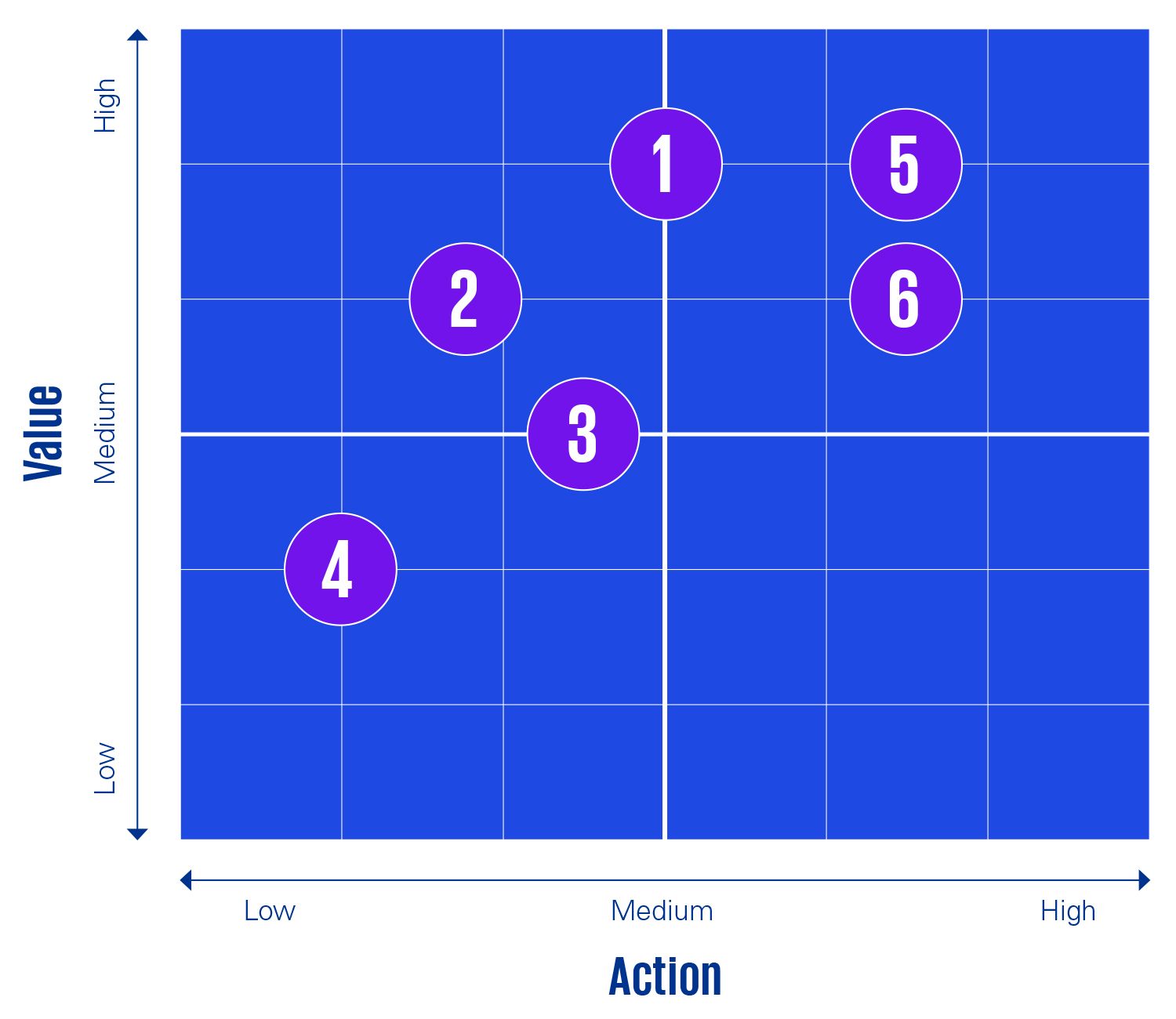Sustainable choices are becoming more commonplace for Dutch consumers. More money is being spent on sustainable products year-on-year (on average this has increased by 14% since 2013), consumers are becoming more conscious of their energy consumption (48% of Dutch people are actively making their homes more sustainable), and almost half of adults in the Netherlands want more green energy (CBS, 2022; NN, 2022; CBS, 2021). One explanation for this is greater awareness of the consequences of less sustainable choices. The recent KPMG Me, My life & My Wallet survey reports, among other things, that 80% of consumers say they are concerned about sustainability. Six in 10 Dutch people also think their own behaviour can influence climate change (CBS, 2021). Yet not every consumer is equally conscious about it. Consumers are at different stages when it comes to sustainability.
These differences in phases can be explained by the diversity of consumers' motivations. In the same Me, My Life & My Wallet survey, 30,000 respondents from 11 countries were asked about their motivations and drivers for their choices. These motivations and drivers were eventually clustered into six segments or customer typologies with corresponding motivations that help explain the differences in the stages of sustainability consciousness.
Segment 1 - Moderates
Moderates consider sustainability important, but take simple, modest steps in this direction. They engage in recycling and reuse and spend steadily more on sustainable products. They try to understand the environmental impact of products, but balance sustainability and price. Just over half are willing to pay a small extra price for sustainable products.
Moderates attach great importance to human rights, diversity and gender equality. They want the companies they buy from to support and improve local communities and show environmental and social responsibility. They care about the world and want the world to be a better place. However, they are not sure how they can help to achieve that.
An example of a statement within this segment is: "Sustainability is very important to me, but sometimes I don't know how best to go about it. I want the world to be a better place, but I don't know how best to act on it."

Figure: Six segments subdivided by value perceptions and action on sustainability
Segment 2 - Pragmatists
For pragmatists, sustainability is often someone else's problem. They have moderate or little interest in sustainable behaviour.
The practical challenges of everyday life and growing consumerism outweigh the need for sustainability. They do recycle, reuse plastic bags and buy second-hand, but this is as much economically driven as being environmentally conscious. They act sustainably when price and convenience prevail.
They rarely consider the socially or environmentally responsible origins of the companies they do business with and are unwilling to pay a premium price for sustainable products.
An example of a statement within this segment is: "Sustainability is the responsibility of governments and companies. If I trade sustainably, it is because it is easy."
Segment 3 - Realists
For realists, environmental damage is the inevitable consequence of growing consumerism.
Generally, this type of consumer lives in countries with high economic development. Realists' sustainable behaviour is determined by convenience and comfort. While they believe that individuals can make a difference, they see it as the responsibility of business to enable them to make those better choices.
As frequent users of social media, their approach to sustainability is as much about social validation as it is about personal values: only 31% indicate that sustainability is part of their personal values.
An example of a statement within this segment is: "I think on some level that sustainability is a big hype, but I also do recognise the need to take action for health and the planet."
Segment 4 - Price-sensitives
This segment is less concerned with sustainability and more focused on the financial aspects of their spending. This segment can be linked to the lower (physiological) levels of Maslow's hierarchy of needs. According to Maslow, a certain level needs to be satisfied first before working towards a higher level. This means that this segment needs to satisfy basic needs first (e.g. buying food to survive), before they can think about more sustainable and often more expensive options. For this segment, concerns are therefore more focused on societal factors such as clean water, quality education and gender equality. They worry little about the environmental friendliness of the companies they buy from and are unwilling (or unable) to pay a premium price for sustainable products. Price is the most important factor.
An example of a statement within this segment is: "I cannot afford sustainability – price is the deciding factor in my life."
Segment 5 - Activists
Activists believe in the power of the individual to make a difference. They believe they can make a difference regardless of what others do.
Their personal values are inseparable from environmental and social considerations. There is no gap between their values and actions. They feel a duty to reduce, reuse and recycle as much as possible. They like to know about a company's environmental performance before buying from them, and they are willing to spend more for sustainable products. This is also a socially focused segment: they are concerned about workers' rights, poverty and peace. Moreover, the majority of this segment considers the environment more important than a growing economy.
An example of a statement within this segment is: "I cannot stand by and do nothing. What I see on social and environmental issues is a strong motivation to take personal action and strive for change."
Segment 6 - Collectivists
Collectivists believe that everyone should contribute. Sustainability plays a very important role in every aspect of their lives. It is deeply embedded in their habitual behaviour. 80% of these collectivists always try to understand the sustainability performance of the companies they buy from.
They want to create a planet that offers the same quality of life in the future as today and are willing to make personal efforts to achieve this. They walk, cycle, or take public transport to reduce their impact on the environment. More than a quarter actively invest in supporting sustainable causes, and they are active investors in ethical funds.
An example of a statement within this segment is: "I believe that individuals alone cannot make a difference and should be supported by local and central government action – but I am very willing to do my bit."
For organisations and brands, it is important to be aware of the differences in motivations and drivers, and also to identify the various segments among their own customers. This insight can help to better align products and services, but also to offer any incentives to become more sustainable in a differentiated way to achieve greater impact.
How can KPMG help?
Motivations and drivers are a powerful basis for segmentation and thus for a differentiated customer strategy. KPMG helps to identify these and weave them into both ESG and customer strategies. In this way, we can work together on a market approach that is not only commercially successful, but also sustainable. Curious about how we do that? Contact our experts Edgar Molenaars & Brigitte Campfens




